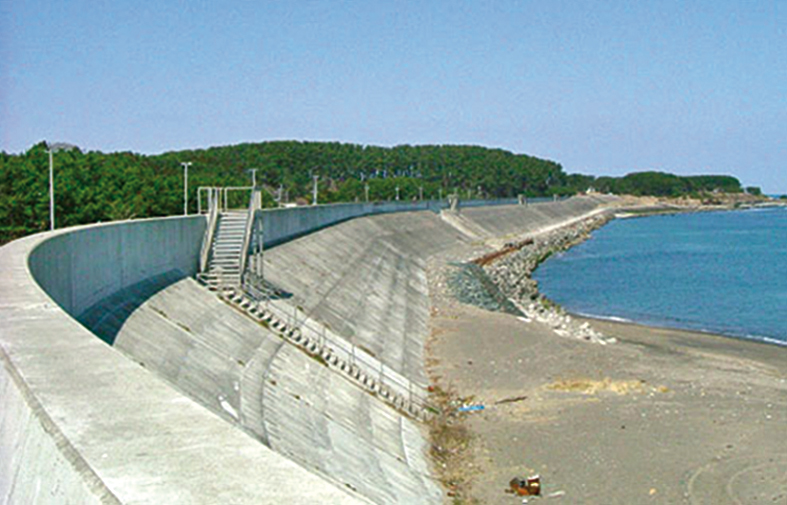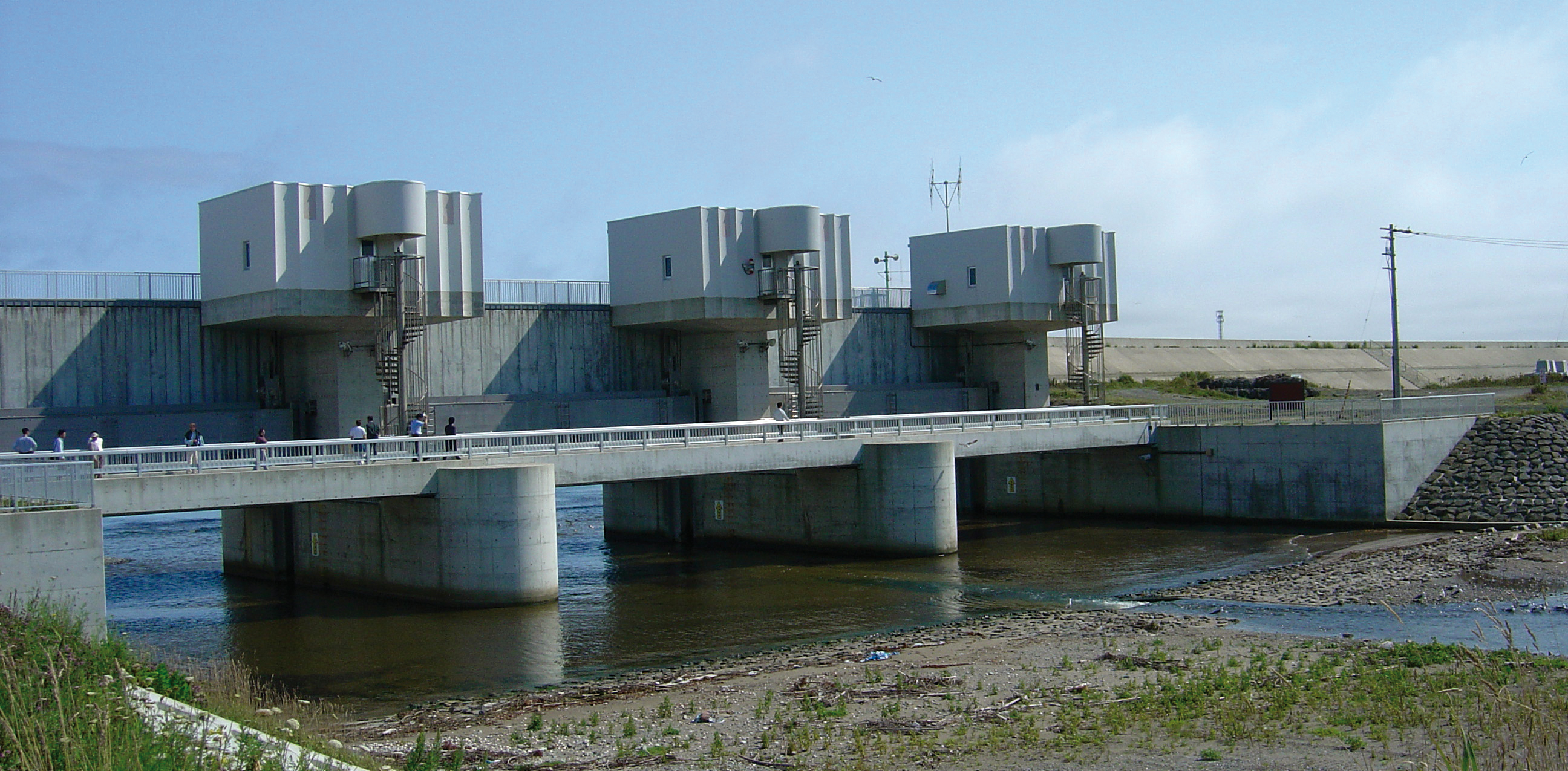Browse the glossary using this index
Special | A | B | C | D | E | F | G | H | I | J | K | L | M | N | O | P | Q | R | S | T | U | V | W | X | Y | Z | ALL
B |
|---|
BreakwaterAn offshore or onshore structure, such as a wall, water gate, or other in-water wave-dissipating object that is used to protect a harbour or beach from the force of waves.
Sea wall with stairway evacuation route used to protect a coastal town against tsunami inundation in Japan. Photo courtesy of River Bureau, Ministry of Land, Infrastructure and Transport, Japan.
Water gate used to protect against tsunami waves on Okushiri Island, Japan. The gate begins to automatically close within seconds after earthquake shaking triggers its seismic sensors. Photo courtesy of ITIC. | |


